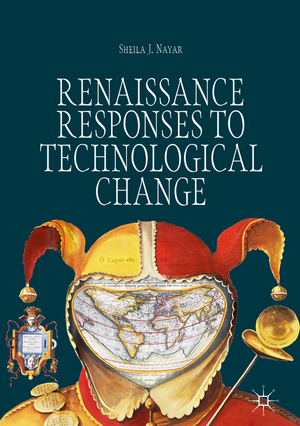Renaissance Responses to Technological Change
Autor Sheila J. Nayaren Limba Engleză Hardback – 7 noi 2018
Preț: 596.55 lei
Preț vechi: 701.82 lei
-15% Nou
Puncte Express: 895
Preț estimativ în valută:
114.19€ • 124.07$ • 95.98£
114.19€ • 124.07$ • 95.98£
Carte tipărită la comandă
Livrare economică 21 aprilie-05 mai
Preluare comenzi: 021 569.72.76
Specificații
ISBN-13: 9783319968988
ISBN-10: 331996898X
Pagini: 394
Ilustrații: XIII, 366 p. 31 illus., 25 illus. in color.
Dimensiuni: 148 x 210 x 23 mm
Greutate: 0.77 kg
Ediția:1st ed. 2019
Editura: Springer International Publishing
Colecția Palgrave Macmillan
Locul publicării:Cham, Switzerland
ISBN-10: 331996898X
Pagini: 394
Ilustrații: XIII, 366 p. 31 illus., 25 illus. in color.
Dimensiuni: 148 x 210 x 23 mm
Greutate: 0.77 kg
Ediția:1st ed. 2019
Editura: Springer International Publishing
Colecția Palgrave Macmillan
Locul publicării:Cham, Switzerland
Cuprins
1. From Petrarch to Bacon, Technécology Style: Introduction.- I. The Comedy of Errata.- 2. From Print Error to Human Errancy in Print.- 3. The Literary Erotics of Print and Misprint.- II. Arms or the Man.- 4. The Golden Age of Chivalry in the Iron Age of Gunpowder.- 5. Plebeian Presence in the Age of Gunpowder.- III. Plus Ultra! Further Yet!.- 6. Renegotiating the World by Compass and Card.- 7. Space, Place, and Literary Self-Projection.- 8. Technological Inter-animation, Writ Large: Conclusion.
Notă biografică
Sheila J. Nayar is Professor of English, Communication, and Media Studies at Greensboro College, USA. She is the author of three previous books, including Dante’s Sacred Poem, and has published widely on the intersections of narrative, technology, and phenomenology, including in JAAR, PMLA, and Studies in Philology.
Textul de pe ultima copertă
This book foregrounds the pressures that three transformative technologies in the long sixteenth century—the printing press, gunpowder, and the magnetic compass—placed on long-held literary practices, as well as on cultural and social structures. Sheila J. Nayar disinters the clash between humanist drives and print culture; places the rise of gunpowder warfare beside the equivalent rise in chivalric romance; and illustrates fraught attempts by humanists to hold on to classicist traditions in the face of seismic changes in navigation. Lively and engaging, this study illuminates not only how literature responded to radical technological changes, but also how literature was sometimes forced, through unanticipated destabilizations, to reimagine itself. By tracing the early modern human’s inter-animation with print, powder, and compass, Nayar exposes how these technologies assisted in producing new ways of seeing, knowing, and being in the world.
Caracteristici
Places print culture in the context of emerging technologies in the long sixteenth century Covers a wide range of Renaissance texts, including military treatises, broadside ballads, stage plays, satires, works of natural philosophy, and maps Appeals to scholars and students of Renaissance literary studies, print culture, the history of technology, and media ecology
